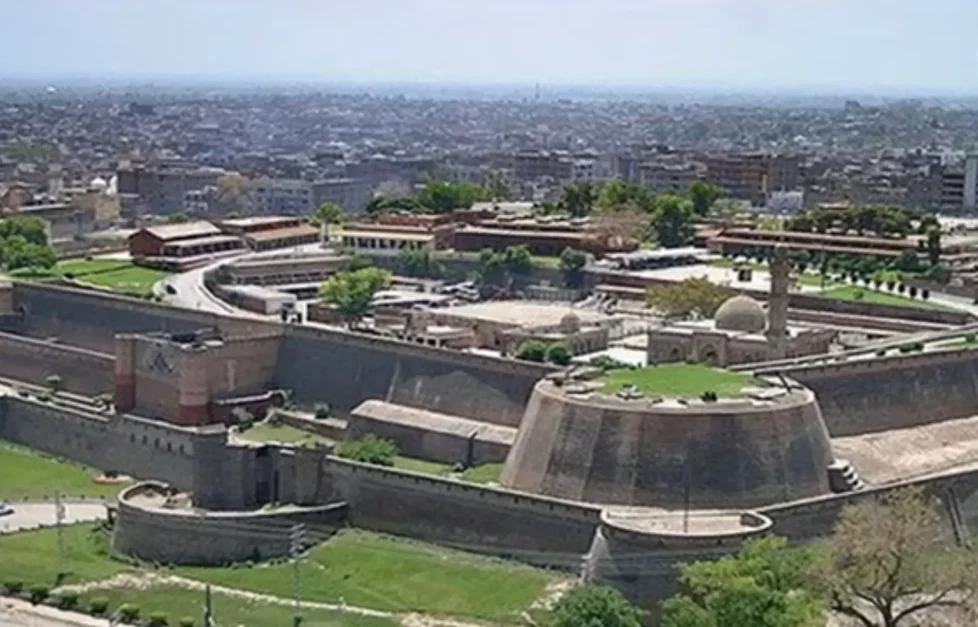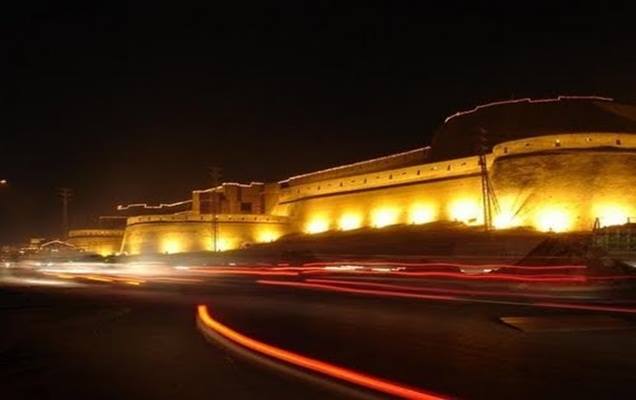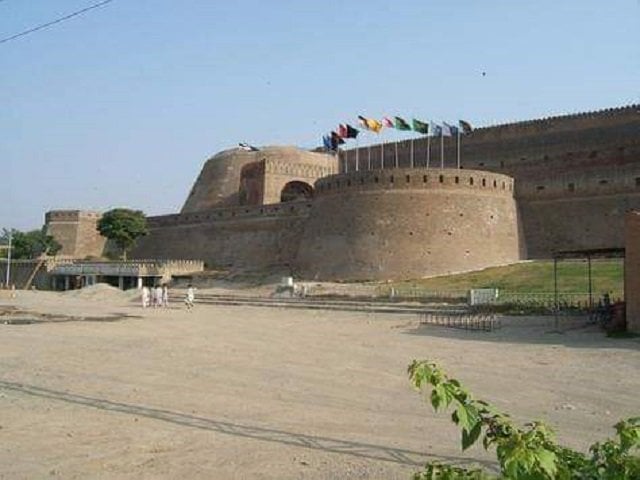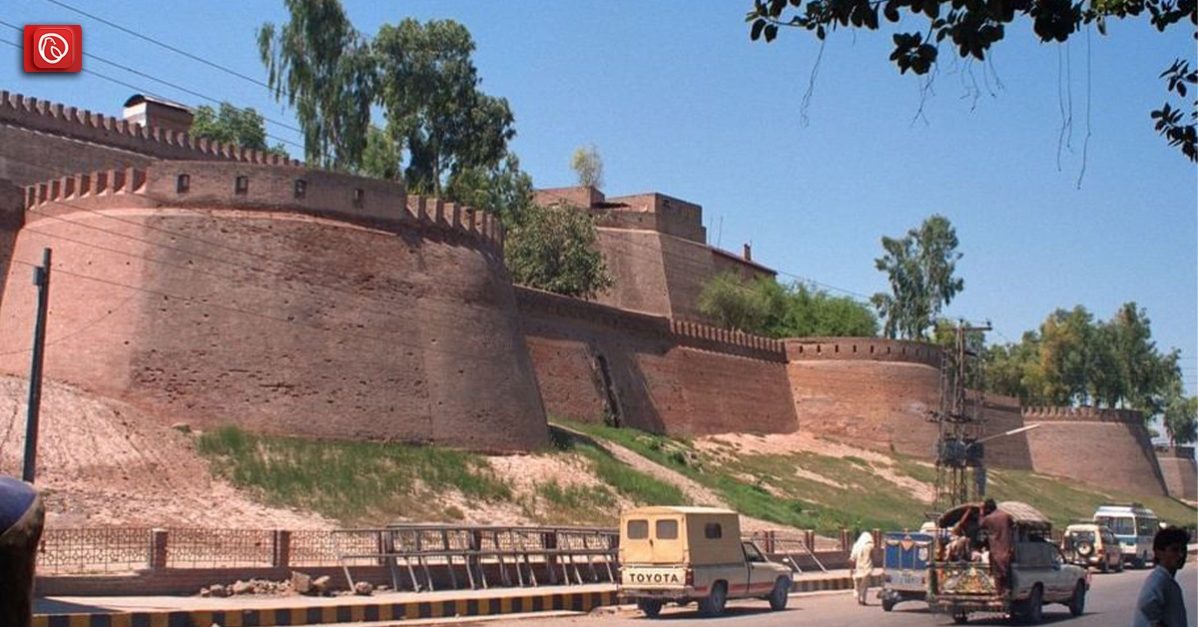Known for its rich history, Peshawar is a hub that draws history geeks from around the globe. The city holds stories of bygone civilizations and cultures, which, today, Graana.com will explore. This blog explores the historical, cultural, artistic, and social significance of Qila Bala Hisar. So, let’s gather your trowels and brushes and dig a little deeper into the captivating tales of these ancient halls.
Join us as Graan.com steps back in time and discover what makes this ancient fort truly a unique piece of our past.
Location of Qila Bala Hisar

The Qila Bala Hisar, also spelled as Bala Hissar, is an ancient fortress and one of the most famous places in Peshawar, Khyber Pakhtunkhwa, Pakistan. Its historical significance dates back to the 7th century when it was first talked about by the traveller Xuanzang. In 1747, the monarch Ahmad Shah Durrani made it the royal residence after conquering Peshawar.
Throughout its history, the fort changed hands a few times. The Marathas briefly occupied it in 1758 but were soon ousted by the Afghans. Subsequently, the Sikhs captured Peshawar in 1823 and reconstructed the fort after some destruction. Later, in 1849, the British East India Company undertook the reconstruction of the fort’s outer walls.
History of Qila Bala Hisar

Bala Hisar Fort is a very important historical site in the region. It has been around for a long time and has seen many important events, such as the Anglo-Afghan Wars and the Indian Rebellion of 1857. The British used the fort as a base when they were fighting in Afghanistan.
The name “Bala Hisar” means “high fortress” in Persian. It was given this name by Timur Shah Durrani, the Afghan king who ruled from 1773 to 1793. The name has stayed the same ever since, even though the Sikhs changed it for a short time when they were in power.
The fort is on a hill in the northwest of Peshawar. It used to be far from the city, but now the city has grown and the gap between the two has been filled in. The fort is high up, so it has great scenery of the city of Peshawar and the surrounding valley. On a clear day, you can even behold the majestic mountains that surround the valley of Peshawar.
The fort covers around 10 acres of an area and is almost 90 feet elevated from the ground level. The fort’s main entrance is right on the old passage to India. The fort is a very important part of Peshawar’s history and culture. It is a popular tourist destination and a great place to learn about the city’s past.
Construction of Qila Bala Hisar
Qila Bala Hisar, originally constructed during the first century AD under the Kushan Empire, has seen numerous rebuilds and renovations carried out by various rulers, including the Mughals, Sikhs, and British, throughout its extensive history.
Due to its advantageous hilltop location, overlooking the city of Peshawar, the fort served as a crucial stronghold for safeguarding against external threats. It also served as a royal residence and a governmental centre for numerous rulers who held sway in the region.
Although the identity of the original fort’s builder remains a mystery, the Kushan Empire, a dominant force in Central and South Asia during that era, was renowned for its advanced military technology and impressive architectural achievements.
Over the ages, Qila Bala Hisar has undergone multiple transformations, yet it retains its significance as a prominent historical site in Peshawar and a popular tourist attraction in northern Pakistan today.
Qila Bala Hisar Architecture

Qila Bala Hisar is a remarkable architectural wonder characterised by its towering walls, imposing towers, and grand gates. The exterior walls, constructed from stone, stand at an impressive height of 20 to 30 feet. Among its several gates, the renowned Bab-e-Khyber gate serves as the primary entrance.
Inside the fort’s precincts, you’ll find various structures, such as a mosque, a dungeon, a garrison, and a palace. The mosque, a Mughal creation, boasts delicate carvings and exquisite designs. The palace, also a product of Mughal rule, was once a royal house. The prison, on the other hand, was used to incarcerate enemies and lawbreakers.
Historical accounts suggest that during his visit to Peshawar around 630 AD, the Chinese traveller Hiuen Tsang encountered a royal residence, which he referred to as “Kung Shing.” The Chinese term implies a fortified or walled section within the city where the royal palace stood.
Similar to other Qilas in the region, such as the Lahore Fort, the Qila Bala Hisar has witnessed a turbulent history of construction, destruction, and renovation under various conquerors and rulers. It played a crucial role due to Peshawar’s strategic significance for invaders and monarchs. In 1526, Babur initially erected a fort there after taking control of Peshawar. Records reveal that after the oustage of Humayun by Sher Shah, the Afghans laid waste to this fort.
Emperor Humayun, during his stay in the area, decided to reconstruct the Qila Bala Hisar before his expedition to Kabul. This fort’s reconstruction was personally overseen by the emperor and was promptly completed.
Qila Bala Hisar met destruction during a conflict between Afghans and the Sikhs. However, after the Sikh invasion of Peshawar in the year 1834, Hari Singh Nalwa initiated the fort’s reconstruction and renamed it Sumergarh.
Following the British Raj’s ascendancy in the region, they refurbished the outer walls of Bala Hisar in 1849, along with the Lahore Fort.
Post-independence, Qila Bala Hisar became the residence of FC, a force originally formed during British rule. In 1948, the Frontier Corps established its headquarters within the Qila Bala Hisar, a tradition that continues today. Many of the barracks and military facilities are from the British colonial period.
A notable military museum within the fort, accessible with a special grant, houses an array of weapons, photographs, artefacts, and uniforms. The ceremonial changing of the guard takes place daily, 10 minutes before dusk.
While Bala Hisar Fort may have lost some of its former grandeur, it still resonates with echoes of its storied past within the passageway, parapets, and select chambers. The imposing Qila and its austere ramparts continue to watch over movement along the GT Road.
FAQs
Here are some important FAQs related to Qila Bala Hisar:
What is Qila Bala Hisar?
Qila Bala Hisar is a historic fort located in Peshawar, Pakistan. It has a rich history and has seen various rulers and conquerors over the centuries.
When was Qila Bala Hisar originally built?
Qila Bala Hisar is believed to have been originally constructed during the 1st century AD, under the rule of the Kushan Empire.
Who were the notable rulers and conquerors associated with Qila Bala Hisar?
Over the centuries, the fort has been rebuilt and renovated by various rulers, including the Mughals, Sikhs, and British.
What is the architectural significance of Qila Bala Hisar?
The fort features impressive high walls, towers, and gates, making it a significant architectural structure. Its mosque and palace from the Mughal era are renowned for their intricate designs.
What is the historical significance of Qila Bala Hisar?
Qila Bala Hisar served as a strategic stronghold for defending against foreign invaders. It was also used as a royal residence and government office by many rulers throughout its history.
How did the fort get its name, Bala Hisar?
The name “Bala Hisar” is derived from Persian and Pashto words, roughly translating to “elevated fort” or “high fort,” reflecting its hilltop location.
Has the fort been destroyed and rebuilt over the years?
Yes, the fort has witnessed various cycles of destruction and reconstruction under different rulers and conquerors. It has faced multiple renovations throughout its history.
What is the current status of Qila Bala Hisar?
Today, Qila Bala Hisar stands as an important historical landmark and a tourist destination in Pakistan, offering visitors a glimpse into its rich and diverse history.
Is there a museum or other attractions within the fort?
Yes, there is a military museum within the fort, showcasing historical weapons, uniforms, photographs, and artefacts. The official swaping of the guard is another attraction for visitors.
How can I visit Qila Bala Hisar and learn more about its history?
Visitors can explore the fort by obtaining the necessary permits. The military museum and guided tours can provide further insights into the fort’s history and significance.
To sum it up, Qila Bala Hisar is a fascinating historical site in Peshawar, Pakistan. It has been around for a very long time, going back to the days of the Kushan Empire. This fort has seen a lot, from destruction to rebuilding, and it’s been under the rule of many different leaders.
This was all about Qila Bala Hisar. For more information like Military Accounts Housing Society, visit Graana.com.




